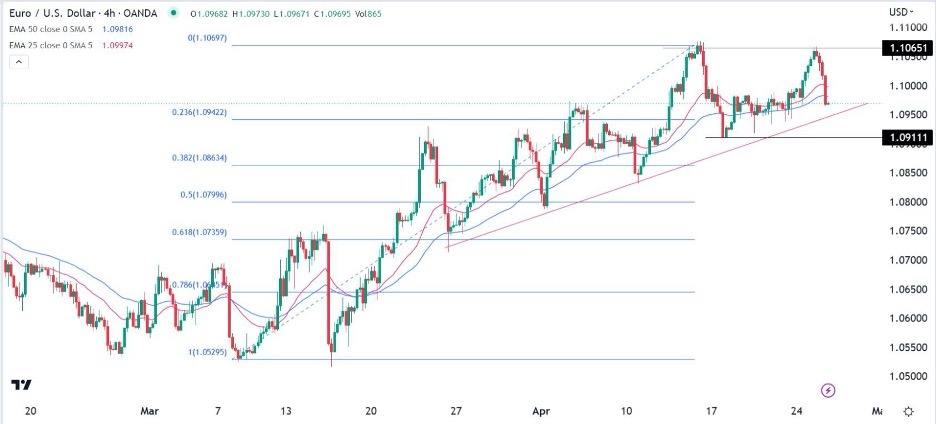The EUR/USD pair erased all the gains made on Monday as concerns about the banking sector returned.
- Sell the EUR/USD pair and set a take-profit at 1.0865.
- Add a stop-loss at 1.1015.
- Timeline: 1-2 days.
- Set a buy-stop at 1.0995 and a take-profit at 1.1065.
- Add a stop-loss at 1.0885.
The EUR/USD pair erased all the gains made on Monday as concerns about the banking sector returned. The pair dropped to a low of 1.0967 after the relatively weak US consumer confidence data and the strong housing numbers.
The main reason for the EUR/USD sell-off was the latest earnings by First Republic Bank, one of the riskiest banks in the United States. In its report, the company said that it had lost over $104 billion in deposits in the first quarter as jitters in the industry jumped. The company is now exploring asset sales worth between $50 billion and $100 billion.
The other main reason for the US dollar index’s comeback was the strong American housing numbers. The data showed that the house price index rose by 4% in February, slightly above the expected increase of 3.9%. On a monthly basis, prices jumped by 0.5% from the previous 0.1%.
Additional data showed that new home sales jumped by 9.6% in March, sharply higher than the expected 1.1%. Building permits came in at 1.43 million, higher than the median estimate of 1.41 million.
These numbers show that the housing sector is doing well even as mortgage rates remain at an elevated level. They showed that there is significantly higher housing demand in the country. As a result, these numbers could incentivize the Fed to maintain its hawkish tone.
On the negative side, consumer confidence dropped in March. According to the Conference Board, consumer confidence dropped from 104 to 101.3. This was the lowest level since July last year. Further, a measure of expectations for the next six months dropped to 68.1. This weak confidence could lead to weak consumer spending in the coming months.
The EUR/USD pair rose to 1.1065 on Tuesday and then quickly pulled back after the strong housing numbers. At its highest point, the pair formed what looks like a double-top pattern whose neckline was at 1.0910. In price action analysis, this pattern is usually a bearish sign. The pair also dropped below the 50-period moving average.
Therefore, because of the double-top pattern, the pair could continue slipping in the coming days. This view will be confirmed if it moves below the ascending trendline that joins the lowest levels since March 23rd. If this happens, the pair will likely drop to the 38.2% retracement point at 1.0860.




